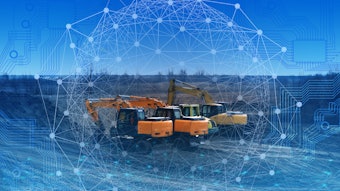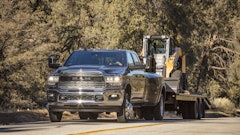
You’re likely hearing buzz about digital twin technology. Is it a passing trend or the future of the architecture, engineering, construction, and real estate industries? Digital twin is the future and a critical piece of the digital transformation journey of any business.
Global research firm McKinsey in “The Next Normal In Construction,” suggests that the construction industry is emphasizing R&D, and companies investing in technology and facilities are gaining traction. Global R&D spending by the top 2,500 construction companies grew 77 percent from 2013 to 2017. The COVID-19 crisis is accelerating change.
In our eBook, Demystifying Digital Twin, we define the technology as a digital replica of a built asset like a bridge or office building. More than just a collection of 3D models starting from the design phase of a project, digital twin is dynamic. It incorporates sensors, Internet of Things (IoT) technologies, and artificial intelligence (AI), feeding real-time data back into the digital models. It evolves with input and gives asset managers new insights.
Nearly 80% of an asset’s lifetime value is realized during operations. This actionable data provides immense value to owners by offering insights that can improve capital planning and facilities maintenance.
Solving operational challenges with digital twin
To see how digital twin can reshape asset operations, look at water infrastructure—an industry with pressing challenges thanks in part to aging and failing pipes, increasing severe weather events and water scarcity.
Innovyze, the water infrastructure software company acquired by Autodesk, uses dynamic digital twins to enable more resilient water systems. Innovyze’s digital twin solution for municipal utilities, Info360, maps critical components of a system, from pipes and tanks to pumps and valves. Real-time data feeds into the platform, providing a comprehensive view of the system’s health. As maintenance or upgrades happen, the digital twin captures the new model data while maintaining a historical record.
While Innovyze’s digital twin is purpose-built for operations and maintenance, the benefits extend to the end user—us. Better managed water systems keep water flowing from the utility to our faucets. They also encourage well-spent public dollars.
Digital twin can provide value in other industries, as well. In healthcare, a hospital owner may have a facility manager use the digital twin to manage and update HVAC and MEP systems, prioritizing critical work and heading off equipment failures. The owner could also use it to improve visitor foot traffic to the gift shop or café.
Digital twins and AEC firms
Building owners are asking for digital data at handover, but they must work together with AEC firms to establish when and where the digital twin lifecycle originates. When they agree on what data is needed from the start, desired operational outcomes are achieved.
AEC firms that use a platform like Autodesk Tandem are enabling improved operational efficiencies for the lifetime of the built asset and thus help customers achieve competitive advantage.
The global digital twin market size in 2020 was valued at $3.1 billion and is projected to reach $48.2 billion by 2026. Digital twin is part of the broader digital transformation taking place throughout AEC. For both AEC firms and owners, it will improve outcomes and competitive advantage.
As the senior director and general manager of Autodesk Tandem, Bob Bray leads Autodesk’s newest business initiative to transform the built asset lifecycle with digital twin technology.




























